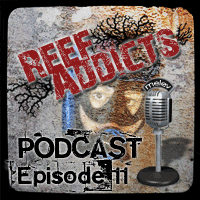If you have a simple system with T5 bulbs, your options may be limited to how many bulbs you can turn on at a time. Most people like to turn on the blues first, give the tank a couple of hours to wake up and then hit the system with the rest of the spectrum. In the evening, those 'daylight' bulbs (pink, white, etc) turn off to give the reef another bath of blue light before lights out. However, how long were the lights on? Often new hobbyists will start with a 12 hour day, but that's too long. Not only is it hard on the livestock, it can fuel algae growth. Not to mention the bulbs will wear out sooner, requiring their replacement sooner.
With LEDs, you've been told they are good for 50,000 hours. At 12 hours a day, that's still 4167 days' worth... over 11 years supposedly. But LEDs aren't as plug and play as many might hope. One of our previous articles delved into this topic focusing on light intensity based on percentages of each color channel, discussing how corals can either do well or even bleach out. Not all LED fixtures are equally built, and those of better quality have enhanced features to permit the user to dial in that sweet spot. Read more here: http://www.reefaddicts.com/content.p...pop-with-color
I'm still a guy that uses metal halide bulbs with VHOs over my main reef, and a Radion fixture over my anemone cube. I also have an inexpensive two button LED fixture over the frag tank that is definitely near the end of its life, and it's less than four years old. In this video, I'll cover these points:
- High noon
- Staggered lighting (Metal Halides)
- Dual spectrums - 10,000K & 20,000K
- Moonlighting
- Progressive lighting (Radion)
- Lighting period durations - even refugiums
 With the lights being staggered, the day-of-lighting lasts longer and I get to observe the 'sun' moving across my reef. You'll see that in the video. Here's a graphic, and I know it's kind of hard to see. Sorry about that. Note that part of the photoperiod sets each bulb to 10,000K mode first. My "high noon" period is about four hours long. And at the very end of the light cycle, moonlighting lasts one hour - not longer.
With the lights being staggered, the day-of-lighting lasts longer and I get to observe the 'sun' moving across my reef. You'll see that in the video. Here's a graphic, and I know it's kind of hard to see. Sorry about that. Note that part of the photoperiod sets each bulb to 10,000K mode first. My "high noon" period is about four hours long. And at the very end of the light cycle, moonlighting lasts one hour - not longer.With the Radion fixture, I checked my bell curve schedule to see how much white light is being used. EcoSmart Live does some of this automatically but you can alter any point to get a specific desired effect when desired. The 4 p.m. to 7 p.m. (high noon) timeslot has white LEDs at 37% ramping up to 55% at the midpoint and back down again. From 3 p.m. to 4 p.m. white is only 15% lit, as well as from 7 p.m. to 8 p.m. The rest of the time the whites are off entirely.
Please watch the video and see if it makes sense to you.
If you have any questions, ask away.





 Menu
Menu





